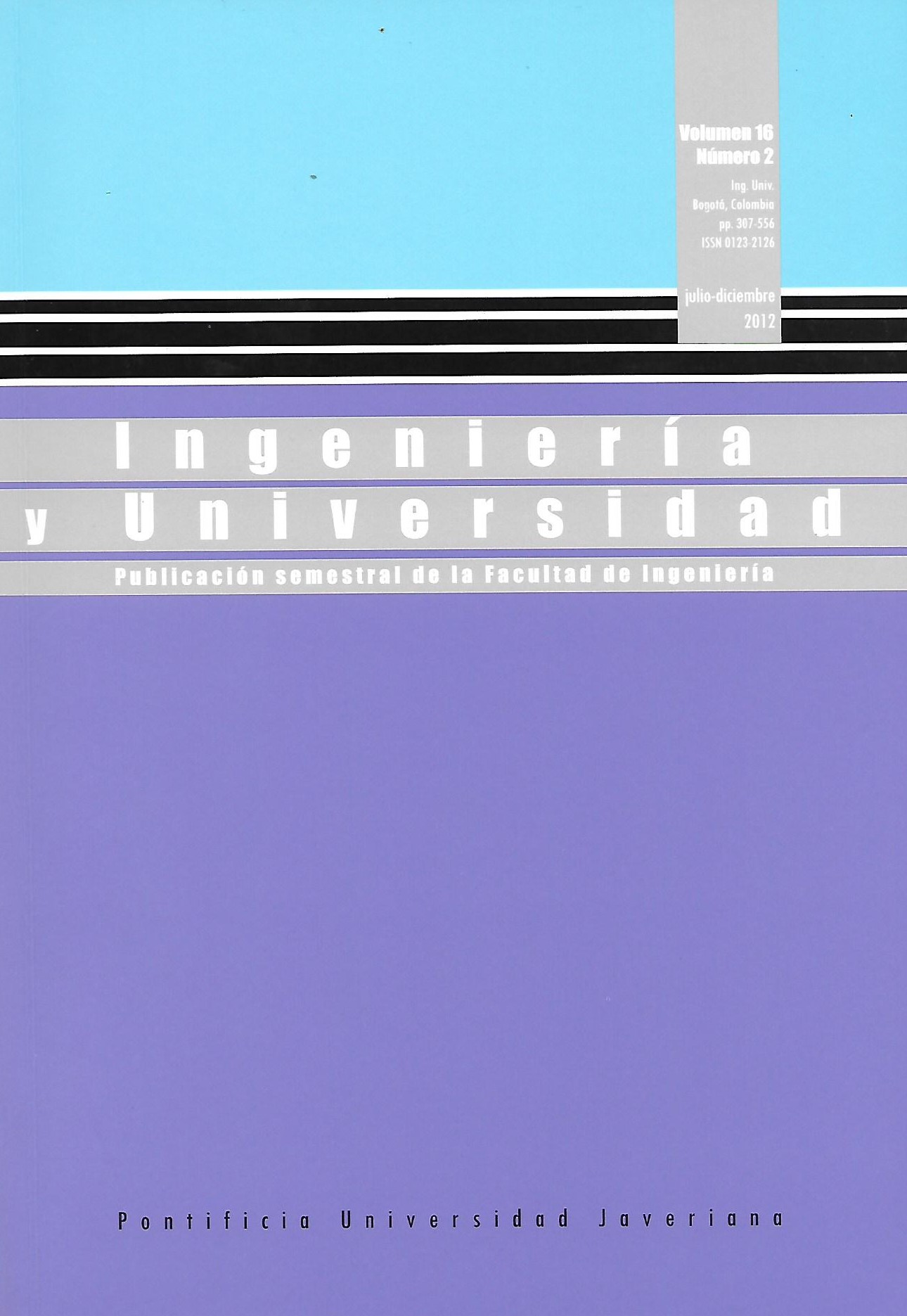Abstract
Recently, devices that allow obtainingthree-dimensional informationfrom the scenes have been developed.The most popular is the onethat have been created by a stereoscopiccouple of cameras. This workpresents a development in stereoartificial vision for getting 3D coordinatesof a real scene, which is processedonline. The stereo algorithmsare designed using OpenCV and aresupported by Linux. Disparity mapsappear in gray scale and in pseudocolor in order to represent the depth.The 3d information is represented byclouds of points in a graphical virtualenvironment. Measures of an objectwith known dimensions resulted inerros between 0.72% and 6.9%.
BRADSKI, G. y KAEBLER, A. Learning open cv computer vision width the open cv library. Estados Unidos: O’Reilly, 2008, pp. 109-458.
BROGGI, A. et al. The single frame stereo vision system for reliable obstacle detection used during the 2005 DARPA grand challenge on TerraMax. Intelligent Transportation Systems Conference. Canadá: 2006, pp. 745-752.
CARELLI, R. et al. Algoritmos estables para la navegación de robots móviles en pasillos usando el flujo óptico. VIII Reunión de Trabajo en Procesamiento de la Información y Control. Mar del Plata: 1999, pp. 1-9.
FAUGERAS, O. et al. Real-time correlation-based stereo: algorithm, implementations and applications. INRIA research report. 1993, núm. 2013, pp. 6-12.
FUSIELLO, A. et al. A compact algorithm for rectification of stereo pairs. Machine Vision and Applications. 2000, vol. 12, núm. 1, pp. 16-22.
GUERRERO, D. y VILLALUENGA, L. Técnicas y algoritmos para la adquisición, transmisión y visualización de escenas 3D. External research report. 2008, pp. 4-8.
HARTLEY, R. Theory and practice of projective rectification. International Journal of Computer Vision.1999, vol. 35, núm. 2, pp. 115-127.
HORN, K. y SHUNCK, B. Determining optical flow. Artificial Ingelligence. 1981, vol. 17, núm. 1, pp. 185-203.
IDROBO, G. y RAMÍREZ, C. Design and implementation of a system for the acquisition and three-dimensional virtual representation of the human face (tri-ident). Eighth International Symposium on Laser Metrology. México: 2005, pp. 648-656.
LANE, R. Stretch-correlation as a real-time alternative to feature-based stereo matching algorithms. Image and Vision Computing. 1994, vol. 12, núm. 4, pp. 203-2012.
LUCAS, B. y KANADE, T. An iterative image registration technique with an application to stereo vision. International Joint Conference on Artificial Intelligence. Canada: 1981, pp. 121-130.
MERY, D. Visión por computador. Santiago de Chile: Departamento de Ingeniería Informática Universidad Santiago de Chile, 2002, pp. 53-66.
MURRAY, D. y JENNINGS, C. Stereo vision based mapping and navigation for mobile robots. IEEE International Conference on Robotics and Automation. 1997, pp. 1-6.
NEDEVSCHI, S. High accuracy stereo vision system for far distance obstacle detection. Intelligent Vehicles Symposium. Japan: 2006, pp. 1-4.
REITER, M. et al. 3D and infrared face reconstruction from RBG data using canonical correlation analysis. 18th International Conference on Pattern Recognition. Hong Kong: 2006, pp. 1-4.
SÁNCHEZ, J. Estimación del flujo óptico en secuencias de imágenes y de la carta de disparidad en pares estéreo. [Tesis Doctoral]. Universidad de Las Palmas de Gran Canaria, España, 2001.
SÁNCHEZ, J. y MARQUES, J. Joint image registration and volume reconstruction for 3D ultrasound. Pattern Recognition Letters. 2003, vol. 24, núm. 4, pp 791-800.
SAXENA, A. et al. 3-D Depth reconstruction from a single still image. International Journal of Computer Vision. 2007, vol. 76, núm. 1, pp. 53-69.
SCHARSTEIN, D. y SZELISKI, R. A taxonomy and evaluation of dense two-frame stereo correspondence algorithms. International Journal of Computer Vision. 2001, vol. 47, núm. 1, pp. 7-42.
SILVA, I. Reconstrucción tridimensional de objetos mediante técnicas evolutivas. [Tesis Doctoral]. Centro de Investigación y de Estudios Avanzados del Instituto Politécnico Nacional, México D.F., 2008.
SZELISKI, R. Computer vision algorithms and applications. New York: Springer, 2010, pp. 98-108.
TOULMINET, G. et al. Vehicle detection by means of stereo vision-based obstacles features extraction and monocular pattern analysis. IEEE Transactions on Image Processing. 2006, vol. 15, núm. 8, pp. 2346-2375.
This journal is registered under a Creative Commons Attribution 4.0 International Public License. Thus, this work may be reproduced, distributed, and publicly shared in digital format, as long as the names of the authors and Pontificia Universidad Javeriana are acknowledged. Others are allowed to quote, adapt, transform, auto-archive, republish, and create based on this material, for any purpose (even commercial ones), provided the authorship is duly acknowledged, a link to the original work is provided, and it is specified if changes have been made. Pontificia Universidad Javeriana does not hold the rights of published works and the authors are solely responsible for the contents of their works; they keep the moral, intellectual, privacy, and publicity rights.
Approving the intervention of the work (review, copy-editing, translation, layout) and the following outreach, are granted through an use license and not through an assignment of rights. This means the journal and Pontificia Universidad Javeriana cannot be held responsible for any ethical malpractice by the authors. As a consequence of the protection granted by the use license, the journal is not required to publish recantations or modify information already published, unless the errata stems from the editorial management process. Publishing contents in this journal does not generate royalties for contributors.


